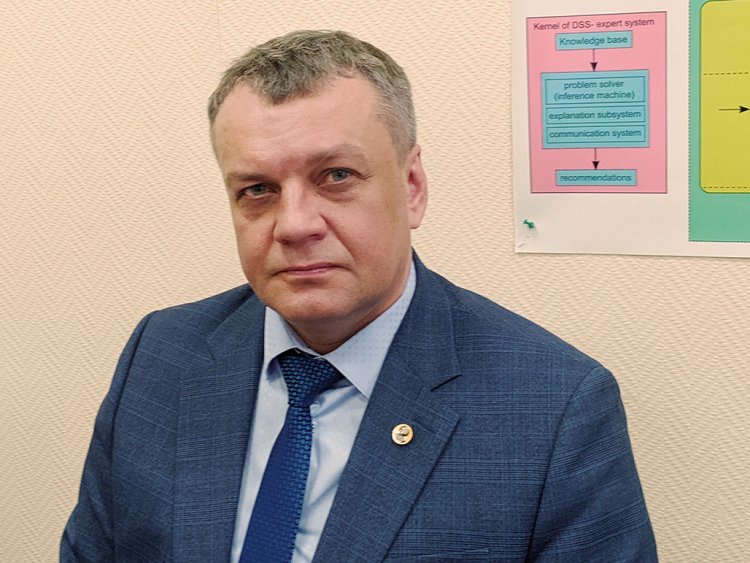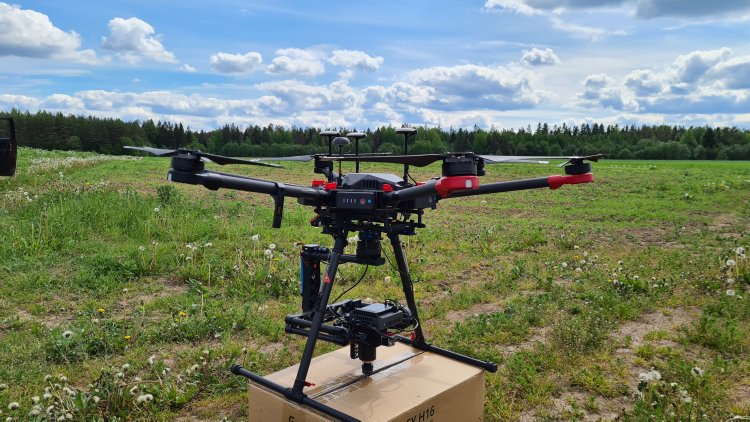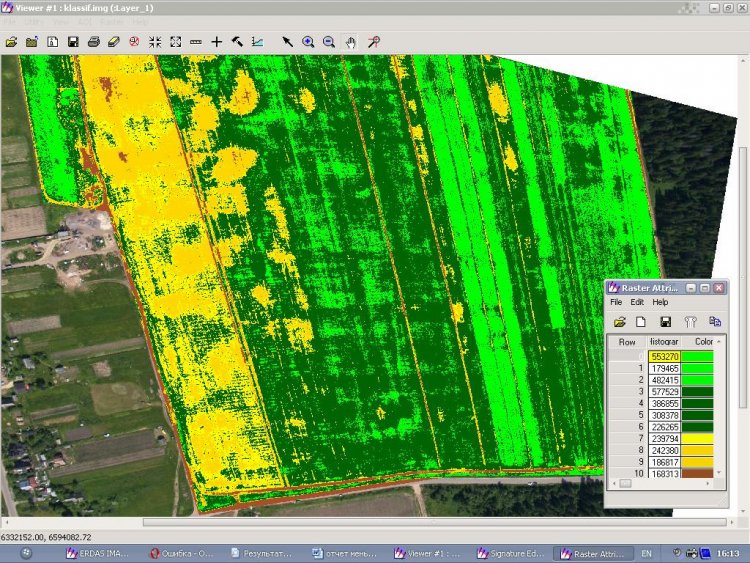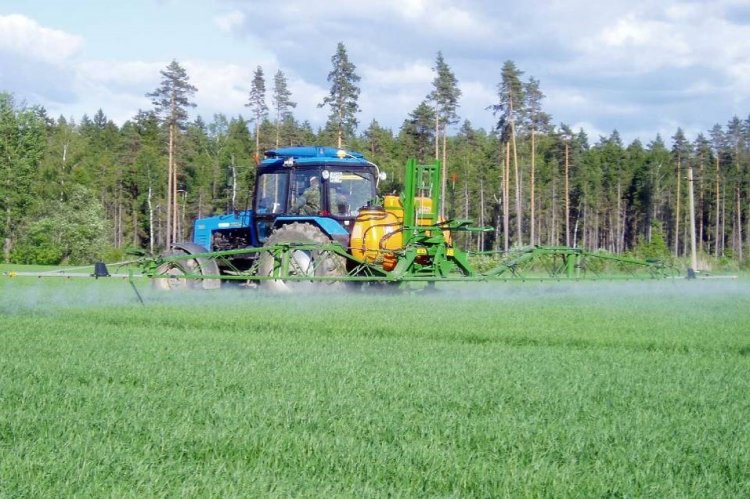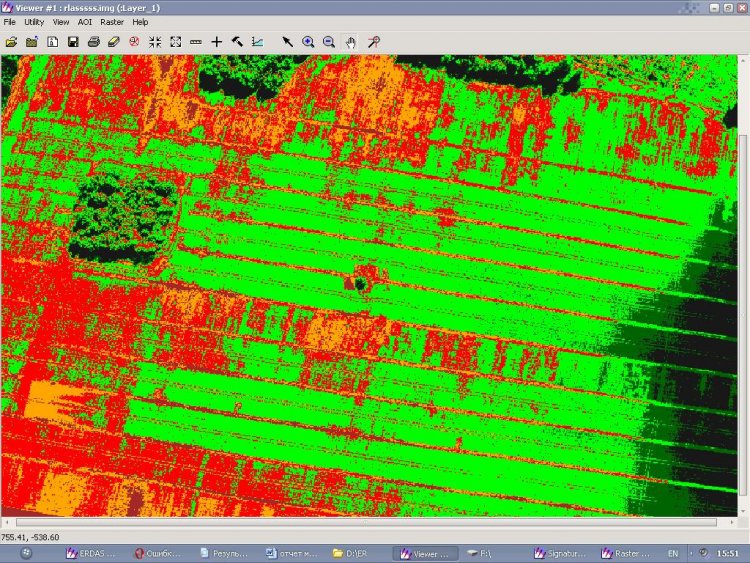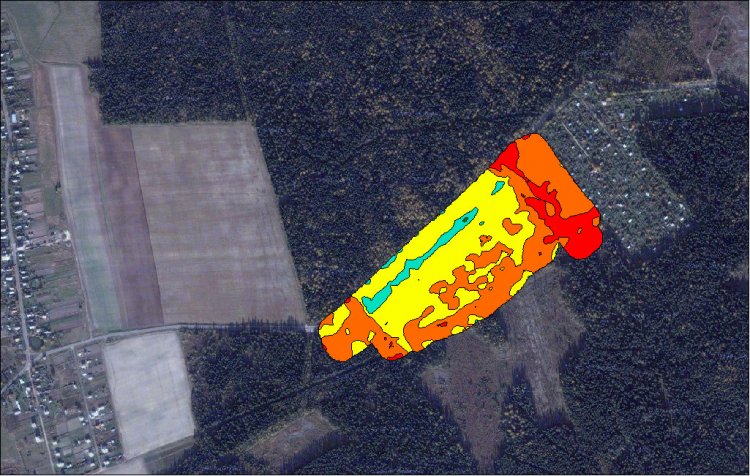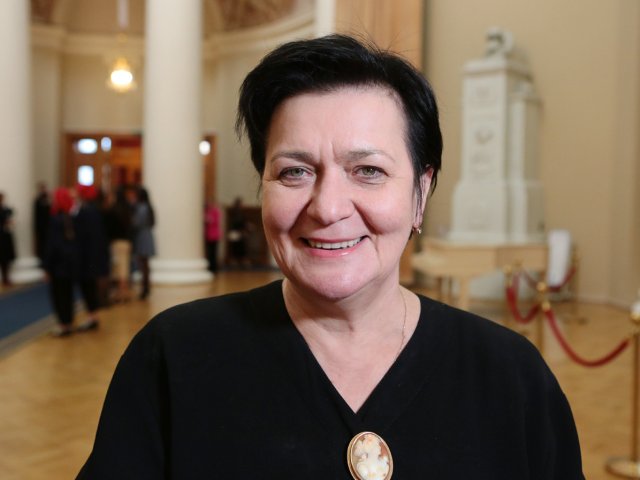People have been striving to increase yields since the advent of early agriculture. To this day, there is an ongoing development of new tools, research on the effects of fertilizers, the cultivation of plants and animals, and the accumulation of knowledge about growing food processes. In the last century, yields increased dramatically when horses were replaced with tractors. And today we are witnessing another agricultural revolution due to information technology and artificial intelligence coming into the industry. What are the developments in today’s smart agriculture? We will learn this from RAS Corresponding Member Vyacheslav Yakushev.
Vyacheslav Yakushev — Chief Researcher at the Agrophysical Research Institute, Doctor of Agricultural Sciences, RAS Corresponding Member.
— In the spring of 2022, you participated in the meeting held by the RAS Agricultural Science Department. What global challenges is the industry facing today?
— Challenges do exist, indeed. And they were discussed by the meeting’s participants, including academicians Yury Lachuga, Alexander Petrikov, and Peter Chekmarev.
The most acute problem is that we use few mineral fertilizers (about 50 kg of active ingredient per hectare on average). For instance, in Belarus, they use about 180 kg of active ingredient per hectare. That is, the lag is quite large.
Another important problem is observed in precision farming. Namely, it is Russia's strong dependence on imported onboard electronics and equipment. The government has already developed several programs aimed at import substitution in the field of agricultural radio-electronic components. This is a good measure, but it won’t help to quickly solve the problem. It is necessary to seek other ways to step up the pace.
Another challenge is related to the lack of seed material.
The situation is particularly difficult in vegetable growing, poultry farming, and cattle breeding material. The relevant federal program was initiated back in 2018. However, the industry has not received funding yet. Today, our country depends on imported seed material in growing potatoes, sunflower, and sugar beet. In other words, there is total reliance on imports in vegetable production.
— How to cope with the challenges under the current conditions?
— With the help of scientific achievements. For example, academician Victor Dragavtsev has been promoting the breeding phytotron project for many years now. The project is aimed at accelerated selection of high-productivity varieties in a special complex, phytotron. It creates climatic conditions required for different varieties and crops. The idea received support but not funding.
Summarizing the described problems, everything boils down to the shortage of money both in science and production. It is important to understand that agricultural producers' resources vary greatly. Some can afford to invest in experimental designs or prototypes, while others cannot. Meanwhile, research work rarely reaches the stage of initial implementation or scaling. Investors usually call this journey from research to the final product a “Death Valley.” And the valley must be crossed somehow. This is another serious problem in domestic agriculture.
— Perhaps smart agriculture technology will be able to solve some of the existing problems. What does this concept include?
— This concept was coined by the Ministry of Agriculture of the Russian Federation. It is associated with the industry’s shift towards a new technological paradigm. Of course, agriculture does not change fundamentally. Professionals still sow, care for plants and animals, monitor crops, treat and harvest them, but they do it at a new technological level which is associated with the emergence of global navigation systems (GPS, GLONASS, China’s BeiDou, and Europe’s Galileo).
UAV equipped with a hyperspectral camera
In addition, there appear devices and software that can perform agrotechnical tasks in a differentiated manner both in animal and crop farming. The latter is called precision farming.
— How is it different from traditional farming?
— Traditional farming perceives an agricultural field as a homogeneous object to be managed. Therefore, all agrotechnical manipulations, such as fertilization or sowing, are carried out in a standardized manner all throughout the field.
In precision farming, thanks to geo-positioning and robots, we split the field into hundreds and thousands of unique parts. Precision farming takes into account individual soil and landscape parameters, as well as other agrochemical indicators of every square meter of the field. Therefore, professionals use different dozes of fertilizers for each part.
With the development of smart agriculture, new devices and professions appear. Of course, technology is gradually replacing people in some areas. But at the same time, new professions emerge. In fact, there appear rural IT clusters. Think of the transition from horse to tractor in agriculture. All village men knew how to harness a horse and use it in their work, but then tractors appeared: their work and maintenance required mechanics, service technicians, operators, welders, and others. Thus, new professions emerge, while the old ones die out eventually, and we can see this process today.
— What is the key advantage of precision farming?
— Humanity is challenged by two divergent tasks today. On the one hand, agriculture is considered one of the most harmful industries. According to estimates, agriculture generates about 70% of the anthropogenic impact on the biosphere. Simply put, this is the most harmful industry on Earth. Therefore, it is very important to preserve the planet, especially the soil. Without fertile soil, we will have no food.
On the other hand, people need food. In the modern world, about a billion people are starving. And this figure will keep growing. Therefore, the transition to differentiated technologies will simultaneously improve environmental safety and increase yields along with improving the quality of products.
For instance, one slope of the field requires 100 kg of nitrogen, while it is advisable not to add anything at all on the other slope. By using fertilizers where they are not needed, we trigger a situation in which excess fertilizers get into the groundwater and harm the environment. Precision farming prevents such situations. With intelligent management of agricultural technology, we can reduce environmental risks and increase the quality and quantity of yields.
Monitoring by means of unmanned radio-controlled vehicles allows controlling the timing and quality of the key farming operations, thus optimizing crop production costs
— Is smart agriculture connected with agroecology?
— Definitely. This is one of the key tools for improving the environmental safety of crop farming.
— In other words, smart agriculture develops at the junction of different scientific disciplines.
— That’s right. This is an interdisciplinary field that unites many specialists and scientific areas.
— To what extent are farmers prepared for the implementation of innovations and the transition to smart agriculture?
— I think many of them are ready. According to the Center for Forecasting and Monitoring of the Kuban State Agrarian University, precision farming technology has been introduced in about 6-8% of Russian farms. For now, we are at the beginning stage, but as I interact with agricultural producers at different levels, from holdings to small farms, I can see that many of them are ready for the new transition. It is not cheap nowadays though.
This situation can be compared with the appearance of mobile phones. They used to be very expensive and few could afford them. Today, almost everyone has a smartphone. I believe that smart agriculture technology will also get cheaper eventually. And, of course, we need to consider the characteristics of each field as we implement the technology. For instance, no satellite images are needed for a field of 500 hectares. It may be worth mastering some technologies on your own instead of hiring professionals right away.
Differentiated application of the main fertilizer. A positive economic effect is achieved through the balanced application of mineral fertilizers, which reduces the environmental burden on the field
— What areas and technical means of smart agriculture do you consider most effective? What technology do we need to follow to keep abreast of developments?
— The transition to smart agriculture can be divided into three main stages. The first stage is the collection of data about the field. This includes satellite images, drone images, yield maps, agrochemical and agrophysical parameters of the field, agricultural landscape maps, and so on.
Stage two involves analyzing the collected data and making decisions on management at different levels: strategic, tactical, and at the level of on-site adjustment of agricultural technology settings.
The third stage is associated with the field implementation of the decisions with the help of agricultural machinery: tractors, combine harvesters, sprayers, mineral fertilizer spreaders, seed drills, and others.
Our Western and Asian colleagues have achieved significant success in implementing the first and third stages. At the same time, it seems to me that data analysis and decision-making are developed to a lesser extent. And here Russia has great potential, including export potential. It is necessary to create software and software-hardware solutions that will bring the second stage of data analysis and decision-making to the international level and, possibly, ensure Russia's leadership in the global market.
Online differentiated fertilizer application system (RT 200, N-Sensor). The onboard computer determines the need for nutrients in real time and controls the spreader
As for stages one and two, it will be very difficult to catch up. However, we need to achieve sovereignty in these areas as well. In order to develop domestic agriculture, we need to come up with something new, and this requires funding that will attract a new generation of scientists to the industry. I would like to note that there are almost no software engineers in the country's agricultural institutes. Today, such professionals can be counted on the fingers of one hand and they usually work for peanuts.
— It seems that smart agriculture and its connection with information technology should attract young people.
— Of course, young people are interested. But it’s all about funding. For example, a janitor's salary today is relatively comparable to that of a doctor of sciences. A young scientist will not agree to work for 30 thousand rubles. Money first, as they say. The industry needs funding.
I would like to emphasize that smart agriculture is an area that experiences ongoing digitalization. These are both software-hardware solutions and computer equipment. Most often, especially at large enterprises, different equipment units produced by different manufacturers are used — a kind of equipment and software “zoo” with elements sometimes conflicting with each other. In my opinion, creating a digital platform based on the ontological approach will become a top priority for domestic agriculture.
What is agrotechnology? This is a complex action plan that consists of many agrotechnical operations. It is possible and necessary to develop programs for each sub-branch of knowledge. But if it is smart agriculture that we want, then it is necessary to create digital twins of agricultural technologies. This will allow using software solutions from different developers, which will be compatible with each other a priori.
A picture taken with a multispectral camera. Weed infestation is visible
— Do you develop such projects at your institute?
— Yes, our laboratory of information support of precision agriculture of the API does just that. Of course, the resources are quite limited. Nevertheless, we receive grants and develop this area.
It is sometimes difficult to explain the specifics of precision farming, especially to a layman. After all, this area is closely related to artificial intelligence, which can be found in many areas today. For example, it is a computer, not a human, that drafts the initial design of an aircraft. Artificial intelligence creates drawings based on the ontological description of the aircraft.
A similar approach can be used in designing agricultural technology, where we are uncertain about a lot of parameters. We cannot predict what the weather will be like in July 2022. But we can choose the required conditions, and the computer will create drawings for an agricultural technology that can be adapted at any time. According to estimates, an agronomist spends two to three months a year on such planning. AI technologies can save this time.
Map of the spring yields of wheat in the field parts where different agricultural technologies were used
— Which IT organizations do you cooperate with?
— First of all, we cooperate with the Faculty of Applied Mathematics and Control Processes of Saint Petersburg State University, my alma mater. We also implement joint projects with ITMO University in the field of artificial intelligence application. These are the two key partners, but we also work with colleagues from other regions. We have recently entered a partnership with Syncretis, an IT company from St. Petersburg.
— How much will the agricultural sector change in the next 10-20 years if smart agriculture technology is gradually introduced?
— It is quite difficult to make predictions now. The global smart agriculture technology market is estimated at about $100 billion. The domestic segment accounts for 350 million. According to the Ministry of Agriculture, this market grows by 15% per year.
The important thing is that technology makes it possible to free people from routine work. A few centuries ago, peasants sowed the field with grain, then reaped the harvest, and prepared sheaves. Today, one combine harvester performs all these operations. In this manner, a lot of people have been freed from routine in favor of other, more creative activities. By the way, there are plenty of such activities in rural areas. They are connected with the development of culture, tourism, arts and crafts. Information technology can transform Russian rural areas and attract more people. It sounds paradoxical, but I consider it possible.
Wheat yield map
— But how to attract young people to agriculture?
— With the advent of precision farming technology, the range of agricultural professions is changing. There are increasingly more IT specialists working with electronic maps, satellite images, and data from unmanned aerial vehicles, which is very interesting in and of itself. The sphere of agricultural technology programming and design is developing rapidly. But the most important thing is the people who remain in this sphere, those who love the land. As a rule, they are somehow connected with agriculture since childhood. I think modern youth will be interested in both new professions and the traditional aspects, which agriculture has always featured. After all, feeding people is a sacred mission.
Photo on the main page provided by Vyacheslav Yakushev.
The interview was taken with the support of the Ministry of Science and Higher Education of the Russian Federation and the Russian Academy of Sciences.
